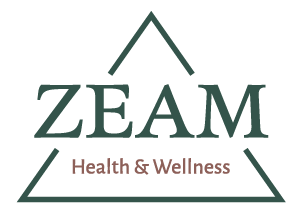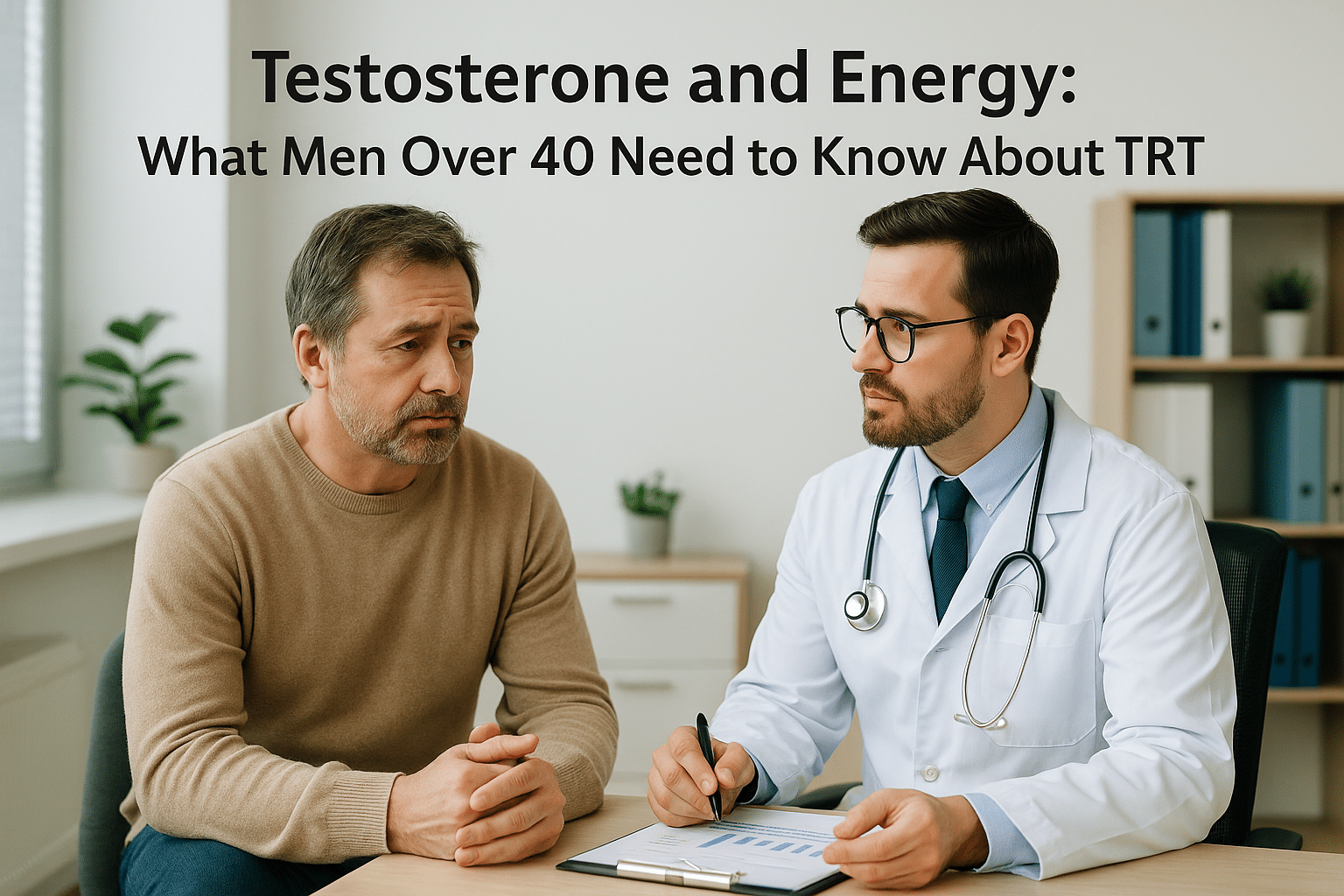At some point, the usual routine starts to feel a bit heavier. You’re still showing up, pushing through the motions. However, the energy you once had, the part that made you feel sharp, strong, and motivated, starts slipping out of reach.
This doesn’t happen overnight. For a lot of men in their 40s or 50s, the shift is gradual. Less drive in the morning and slower recovery from workouts. That once-reliable edge starts to fade.
Sometimes, it’s aging. But often, something else happens behind the scenes.
It could be low testosterone. And for those asking whether it’s possible to get that fire back, the answer is yes, with the right guidance.
The Link Between Testosterone and Your Get-Up-and-Go
Energy is complicated. Food, stress, sleep, and mental load all play a role. However, testosterone is a major piece of the puzzle.
This hormone supports more than muscle. It affects how well oxygen moves through your system, how easily you build strength, how quickly you recover, and how driven you feel when the day starts.
Testosterone doesn’t just dip randomly. It begins a slow decline, around 1% per year after age 30. That might not seem like much at first. But by your mid-40s, the difference adds up.
In 2017, researchers confirmed that the healthy range for testosterone in young men lies between 264 and 916 ng/dL. If you’re in your 40s and wake up tired, struggling with motivation, or noticing body composition changes, a drop in levels could be part of the picture.
The Signs of Low Testosterone Beyond Fatigue
It’s tempting to brush off tiredness as just “getting older.” But when testosterone falls, energy loss is only the beginning.
Most men with low testosterone experience several symptoms. These symptoms can overlap, making it easy to miss the connection unless you look at the bigger picture.
Here are some common red flags:
- Feeling worn out during the day, even after a full night’s sleep
- A noticeable drop in libido or sexual function
- Brain fog or forgetfulness, especially in the afternoon
- Mood swings, low motivation, or a dip in confidence
- Muscle loss and an increase in abdominal fat
- Poor stamina during workouts
- Trouble falling or staying asleep
How TRT Can Restore Energy and Vitality
When testosterone levels return to a healthier range, something shifts. Although this shift is rarely instant or magic, it’s noticeable.
A Measurable Shift in Energy
In the TRAVERSE study, researchers looked at testosterone therapy in men with confirmed low levels. They found that those receiving therapy were far more likely to correct anemia, a common but often hidden cause of fatigue. Once anemia improved, energy did, too. The energy was enough to be measured in patient surveys and lab values alike.
The Sleep Piece
Low testosterone can disrupt sleep cycles. Conversely, when levels stabilize, many men report sleeping more deeply and waking up more alert. If sleep apnea is also diagnosed and treated, the results can compound.
Sharper Focus, More Motivation
Brain fog, loss of edge, and poor memory can improve when testosterone stabilizes. Again, this isn’t about becoming superhuman. It’s about getting back to your baseline and finally feeling like yourself again.
Addressing Common TRT Safety Concerns
A quick search will turn up plenty of fear-based headlines. But most of those concerns are based on outdated data or misuse, not the kind of therapy you’d receive from a qualified provider.
Prostate Cancer
Modern studies have found no increased risk of prostate cancer with supervised hormone replacement therapy. PSA may go up slightly, but that doesn’t automatically signal danger. Doctors monitor those levels regularly, and the increase usually stays within a healthy range.
Heart Attacks and Strokes
The TRAVERSE trial followed over 5,000 men on testosterone therapy. There was no higher risk of heart attack or stroke compared to placebo. However, the study did report slightly more cases of atrial fibrillation and pulmonary embolism in the treatment group, so routine check-ins matter.
“It’s Just Steroids, Right?”
Steroid misuse involves boosting testosterone to extreme, dangerous levels. Testosterone replacement therapy aims to restore normal levels, not exceed them. That’s a huge difference in both intent and outcome.
So, What’s the Catch?
Safety comes down to professional care. That means:
- Regular bloodwork (PSA, hematocrit, free T)
- Blood pressure checks
- Dose adjustments when needed
- Ongoing monitoring of side effects
In fact, in 2025, the FDA revised its guidance, removing the boxed warning about strokes and heart attacks from testosterone medications.
The Right Way to Explore TRT
A lot of “low T” clinics push fast fixes. You walk in, answer a few questions, and walk out with a prescription. But that skips all the essential steps.
Here’s what proper low testosterone treatment looks like:
It Starts With Two Morning Labs
Testosterone naturally peaks in the early morning. That’s when you need your blood drawn twice, on different days. Only then can a real diagnosis be made.
If your numbers are borderline, your provider may also test free testosterone, especially if your SHBG levels are high or low.
A Full Health Review
Before starting any therapy, you need a full evaluation. That includes:
- Screening for sleep apnea
- Reviewing heart health
- Checking fertility goals
- Evaluating prostate history
Custom Plans Only
Treatment should match your body, your goals, and your lifestyle. That means deciding between:
- Weekly or biweekly injections
- Topical gels or creams
- Oral capsules
- Subcutaneous auto-injectors
Monitoring That Actually Monitors
Once therapy starts, labs should be run every few months. PSA, hematocrit, blood pressure. Nothing gets overlooked.
Finding TRT Near You With Zeam Health
Feeling off isn’t always easy to explain. At Zeam Health, we listen first, then we look at the numbers. Our primary care team offers testosterone replacement therapy that’s grounded in real data, not assumptions. Whether it’s injections, topicals, or oral solutions, your plan should reflect your life.
We serve men in Folsom, Roseville, and beyond who are ready to get answers. You don’t have to push through another week of fatigue, brain fog, or low drive without knowing what’s going on.
If you’re ready to explore hormone replacement therapy, we’re ready to help. Book a private consultation today, and let’s figure out what’s next.
Key Takeaways
- Testosterone declines gradually — levels drop about 1% per year after age 30, leading to fatigue, muscle loss, brain fog, and reduced motivation in men over 40. [1]
- Symptoms go beyond tiredness — low testosterone often causes low libido, mood swings, poor sleep, memory issues, and body composition changes. [2]
- TRT measurably restores energy — the TRAVERSE trial found testosterone therapy corrected anemia, a hidden cause of fatigue, improving energy and daily function. [3]
- TRT supports better sleep and focus — stabilizing testosterone can improve sleep cycles, reduce brain fog, and help restore baseline motivation and mental sharpness. [2][4]
- Prostate cancer risk not increased — modern studies show no higher risk with supervised TRT, though PSA levels require monitoring. [5]
- Cardiovascular safety has improved evidence — TRAVERSE reported no excess risk of heart attack or stroke, though some increases in atrial fibrillation and pulmonary embolism require ongoing monitoring. [3]
- FDA revised labeling in 2025 — the FDA removed boxed warnings about cardiovascular events from testosterone medications, reflecting updated safety evidence. [6]
- Proper diagnosis is essential — TRT should only follow two early-morning testosterone tests on separate days, plus evaluation of prostate health, sleep apnea, fertility goals, and cardiovascular risk. [1][5]
- Safe care requires regular monitoring — labs for PSA, hematocrit, free T, and blood pressure ensure TRT stays within healthy ranges. [5]
References
[1] Cleveland Clinic. Declining Testosterone Levels in Men: What’s Normal, What’s Not. 【Cleveland Clinic†source】
[2] Travison TG, et al. The relationship between testosterone levels and symptoms of aging in men. PMC. 【PMC†source】
[3] Nissen SE, et al. TRAVERSE: Testosterone Replacement Therapy in Hypogonadal Men and Cardiovascular Outcomes. NEJM. 2023 【NEJM†source】
[4] Frontiers in Endocrinology. Sleep, cognition, and testosterone interplay in men. 2024 【Frontiers†source】
[5] World Journal of Men’s Health. Testosterone Therapy: Safety, Prostate, and Cardiovascular Considerations. 【WJMH†source】
[6] Reuters. FDA issues labeling changes for testosterone products. Feb 28, 2025 【Reuters†source】




